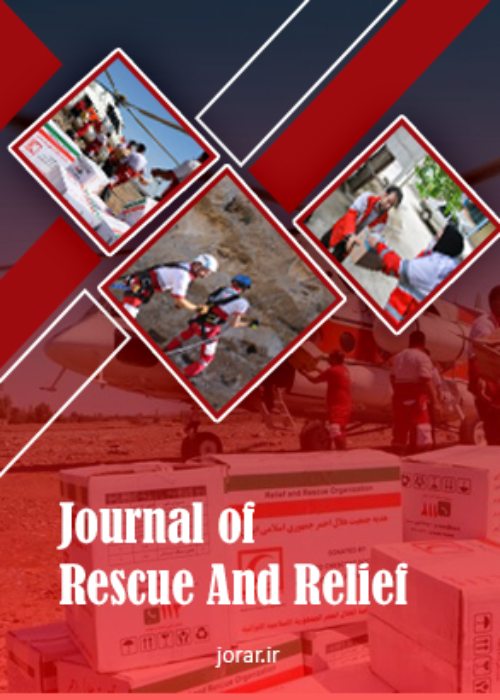Presenting the combination model of EFQM excellence model, balanced scorecard, and network data envelopment analysis to compile teamwork performance evaluation at Shiraz emergency bases
Author(s):
Article Type:
Research/Original Article (دارای رتبه معتبر)
Abstract:
Background
Emergency department is the heart of a hospital and the regular conduct of the affairs can save lives. In addition, teamwork in healthcare is the way of organizing activities that adopts a widespread approach to health needs and provides potential capacities for full utilization of human resource abilities. Therefore, it is important to study the efficiency of the emergency department and dividing people into effective teams; and it needs an appropriate tool and management structure to take quantitative and qualitative scales. In this study, a mathematical model has been presented to assess the effectiveness of teamwork in emergency stations in Shiraz by combining three perspectives of EFQM excellence model, balanced scorecard, and Data Envelopment Analysis that includes the advantages of three models and covers their defects to some extent.
Method
In the proposed model, empowerment and results of the EFQM excellence model and balanced scorecard have been used to determine the input and output indices and to distinguish the human resource efficiency indicators of the teams respectively. First, decision-making trial and evaluation laboratory (DEMATEL) and access to network structure have been used to determine the relation between the balanced scorecards. Finally, the Network Data Envelopment analysis model has been used to evaluate teamwork performance of bases staff in Shiraz emergency and to classify personnel into appropriate teams.
Findings
In this research, three models including Network Data Envelopment analysis, Balanced Scorecard Analysis and EFQM Excellence Model were combined to identify performance assessment indicators of Shiraz emergency bases. Hence, while reducing the disadvantages the models benefits are strengthened, and a comprehensive model for evaluating the performance of this base was presented.
Conclusion
According to the emergency standards, the personnel were categorized based on their total efficiency in four teams such as First Responder, Basic, Intermediate and Paramedic. The results presented that of the 141 emergency personnel, 18% should be in First Responder team, 61% in Basic team, 12% in Intermediate and finally 9% in Paramedic team.Keywords:
Language:
Persian
Published:
Scientific Journal of Rescue Relief, Volume:10 Issue: 3, 2018
Pages:
58 to 73
magiran.com/p1980696
دانلود و مطالعه متن این مقاله با یکی از روشهای زیر امکان پذیر است:
اشتراک شخصی
با عضویت و پرداخت آنلاین حق اشتراک یکساله به مبلغ 1,390,000ريال میتوانید 70 عنوان مطلب دانلود کنید!
اشتراک سازمانی
به کتابخانه دانشگاه یا محل کار خود پیشنهاد کنید تا اشتراک سازمانی این پایگاه را برای دسترسی نامحدود همه کاربران به متن مطالب تهیه نمایند!
توجه!
- حق عضویت دریافتی صرف حمایت از نشریات عضو و نگهداری، تکمیل و توسعه مگیران میشود.
- پرداخت حق اشتراک و دانلود مقالات اجازه بازنشر آن در سایر رسانههای چاپی و دیجیتال را به کاربر نمیدهد.
In order to view content subscription is required
Personal subscription
Subscribe magiran.com for 70 € euros via PayPal and download 70 articles during a year.
Organization subscription
Please contact us to subscribe your university or library for unlimited access!



